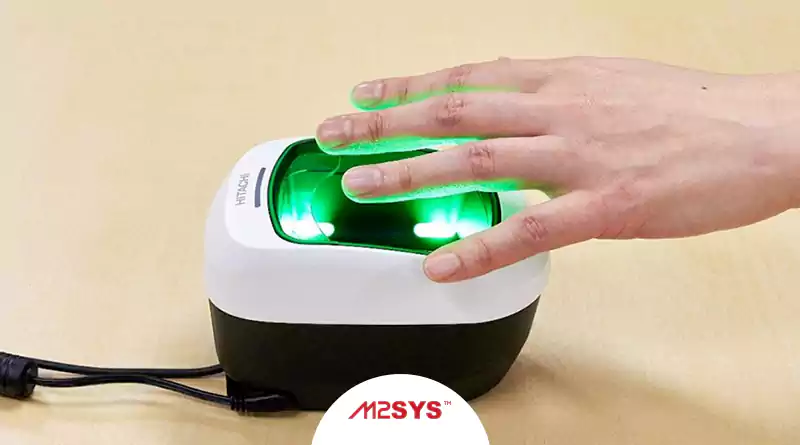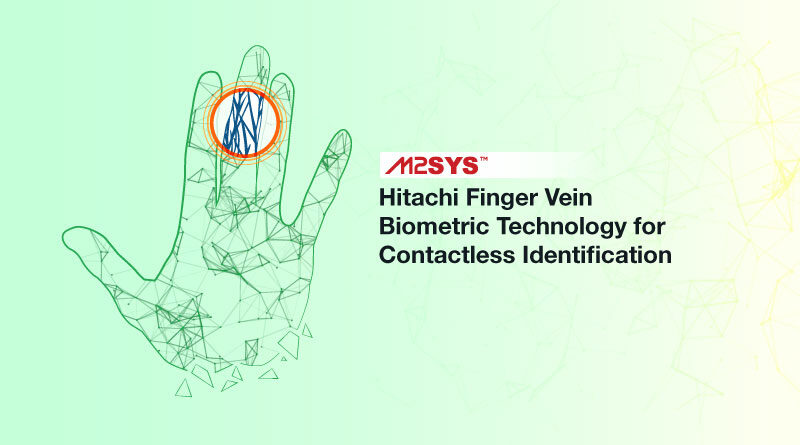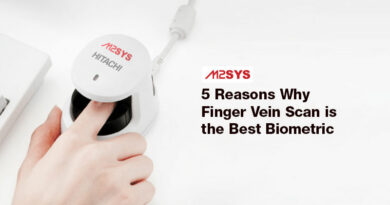Hitachi Finger Vein Biometric Technology For Contactless Identification
The Covid-19 pandemic has undeniably accelerated digital transformation within every industry, with touchless technology and automation taking a significant role in the revolution to minimize human contact. Contactless biometric authentication technology enables user authentication without physically touching surfaces; this, in turn, lowers the risk of contamination.
With enhancements in recent security requirements, touchless biometric technology has now become widely used in many applications. These include internet banking, automatic teller machine, within the healthcare industry, door access control, retail user, personal authentication for computers, and even border-crossing controls.
To address these new societal needs, Hitachi has released its contactless “Hitachi C-1 Contactless Finger Vein Reader” for safe and hygienic identification, providing secure touchless authentication solutions.
Hitachi has been working on its touchless finger vein authentication technology since 2005, when it first patented the contactless identification system. The goal was to provide an easy, accessible form of touchless biometric authentication. In turn, this system would help eliminate the hassle of remembering passwords; this would also minimize the risk of password spoofing/sharing, replay attacks, or phishing attacks.
With traditional fingerprint and facial recognition systems, there is a high chance of identification being easily copied and later used to impersonate an individual. Faces and fingerprints are often on display, which increases the risk of theft by third parties. The most obvious flaw of facial recognition is that your face is exposed wherever you go, making it easier for face scanners to identify you from a distance (even without your approval). Hence, with facial identification systems, there have even been cases of fraudulent identification simply by using a photograph of the individual. Contrastingly, since finger vein recognition is internal, data spoofing or identity theft by third parties is nearly impossible.
Hitachi has introduced a sensor reader requiring users to register their finger vein patterns. Users must maintain a distance of 20 mm between their fingers and the device’s surface for future passwordless authentication processes. Once registered, users simply have to hold three fingers over the sensor reader to identify individuals. The use of three fingers is further beneficial, making it possible to distinguish millions of users. The process is a completely contactless, hygienic, and highly secured form of biometric recognition, thus promoting higher user-level acceptance.
Finger vein identification is contactless, meaning you don’t have to touch the sensor to scan your finger. This makes it much more hygienic than other fingerprint biometrics and is particularly important in industries with strict hygiene requirements, such as the healthcare industry or food manufacturing facilities.

Finger vein contactless identification is a comparatively new term for many. A finger vein scan is a powerful biometric that identifies a user based on the internal vein patterns in their finger, which is unique to every person. Finger vein identification is also known as vascular biometrics, as the recognizable information is concealed beneath the skin. The technology detects blood flowing through the user’s finger – to be more accurate, it detects the iron-containing protein – which changes color when exposed to near-infrared light. As a result, the Hitachi C-1 Contactless Finger Vein Reader can scan the user’s unique vein mapping to verify a user. The vein patterns are digitized and encrypted, making it a more secure method of verification and authentication.
However, the unique touchless finger vein biometric identification method has several major security and privacy benefits that traditional biometric solutions, such as fingerprint or facial recognition, do not offer. As finger vein recognition is internal, it is not exposed publicly in the same way as some other biometrics. Finger vein contactless identification uses the unique patterns of finger veins in order to identify users at a high level of accuracy.
With the Hitachi C-1 Contactless Finger Vein Reader, users enjoy both significant security advantages and privacy advantages, too. During contactless identification, the user’s information is securely transmitted to the identity repository and stored encrypted. The finger vein pattern data is never stored on the device. As such, even if the device is stolen, the user’s personal biometric remains safe. Another advantage of using finger vein authentication is that a user’s finger vein patterns usually change only slightly over the years; as a result, one-time enrollment is often suitable to continue using this verification system for several years.
Overall, finger vein authentication is a reliable and convenient method that can be used for a large variety of applications across many industries. Unlike fingerprint biometrics, finger vein authentication is completed without the need to touch any surfaces, making it one of the most secure and hygienic methods for use in today’s Covid and post-Covid world. And while every biometric system has its unique pros and cons, finger vein biometric authentication offers various advantages over other solutions. As such, it is rapidly becoming one of the most highly demanded biometrics on the market. The finger vein identification method is more hygienic, secure, private, and accurate, making it a versatile choice for a large variety of applications.
We’d love to help you put contactless identity at the center of your organization, so let’s connect. To find out more about the Hitachi C-1 Contactless Finger Vein Reader Biometrics System, please contact us.










